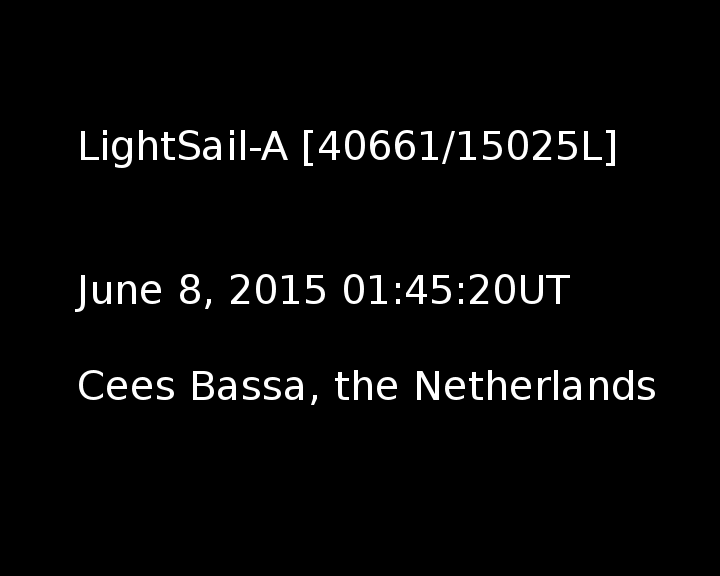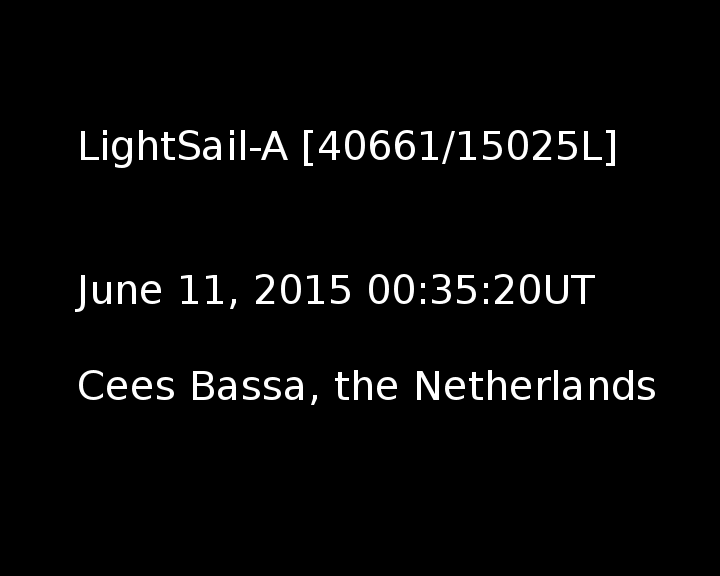Jason Davis • Jun 12, 2015
In Pictures: LightSail’s Final Days in Space
LightSail’s brief stay in orbit is almost over.
Since unfurling its solar sails June 7, the spacecraft has dipped steadily toward Earth as it trawls through the upper atmosphere. It’s now in a 330 by 523-kilometer orbit—down from a high point of about 700 kilometers. Predictions for reentry continue to converge on Sunday, June 14. It’s likely that come Monday morning, LightSail will be no more.
After completing the download of a sails-out photograph on Tuesday, the team started working to get an image from the spacecraft’s opposite-side camera. LightSail sent home what was supposed to be a picture, but the file did not compile into a viewable image.
Preparations began to capture a fresh set of images. Before that happened, however, the radio system began transmitting a continuous signal that doesn’t contain any usable data. LightSail is turned on and communicating, but it’s talking in one, unending sentence, and we can’t get a word in edgewise.
The engineering team has been sending the spacecraft reboot commands, with no success thus far. Tyvak Nano-Satellite Systems, the radio manufacturer, reports they have never seen this behavior. Neither has Cal Poly San Luis Obispo, despite their lengthy experience with CubeSats over the years. Troubleshooting and ground testing to recreate the problem continues.
Radio and astronomy observers around the world have been following LightSail closely. With just a couple days left before the mission ends, now seems like a good time to showcase a few photos and videos we’ve received of LightSail in Earth orbit. Most of these have been verified by an additional source to ensure accuracy.
LightSail laser ranging attempt, June 7 (CubeSat form) This video, captured by Andriy Makeyev in Crimea, shows LightSail 1 crossing the sky on June 7, 2015 at 00:20:32 UTC prior to solar sail deployment. The bright beam was used for laser ranging (no echoes were returned from LightSail). Details: EVS VNC-753-H2 CCD camera, 12cm refractor (FOV is 36'x27'). SLR station Katzively-1893, 44.3932°N, 33.9701°E, 68.7 m.Video: Andriy Makeyev




Support our core enterprises
Your support powers our mission to explore worlds, find life, and defend Earth. You make all the difference when you make a gift. Give today!
Donate

 Explore Worlds
Explore Worlds Find Life
Find Life Defend Earth
Defend Earth

